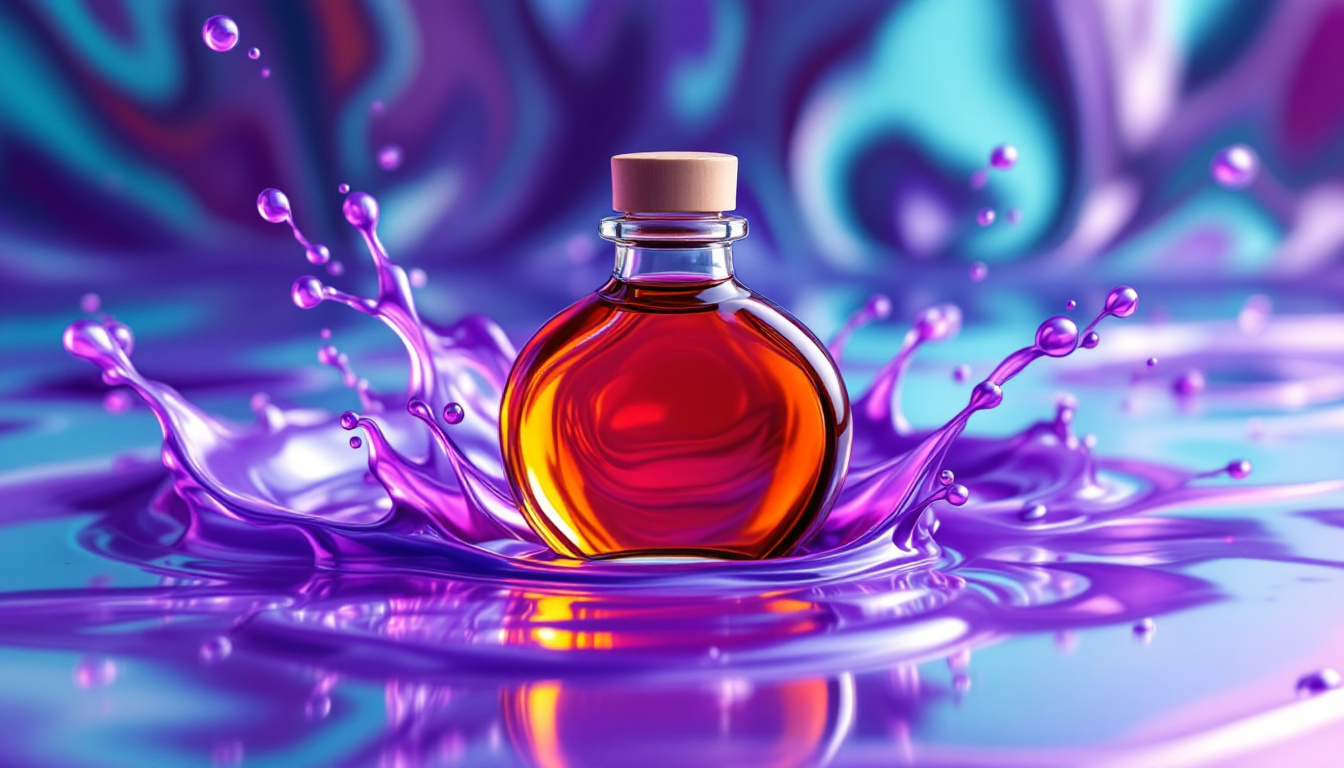Unpacking Purple Drank
Purple Drank, commonly referred to as lean or sizzurp, has garnered attention both for its alluring cultural presence in music and its hazardous health implications. This concoction comprises several key ingredients, each playing a distinct role in its effects and risks. With increasing concern over its recreational use and potential for addiction, it’s vital to delve into what makes up this controversial beverage and the broader contexts surrounding its use. Join us as we explore the ingredient profile, health dangers, and social dimensions that define Purple Drank.
Core Ingredients and Their Effects
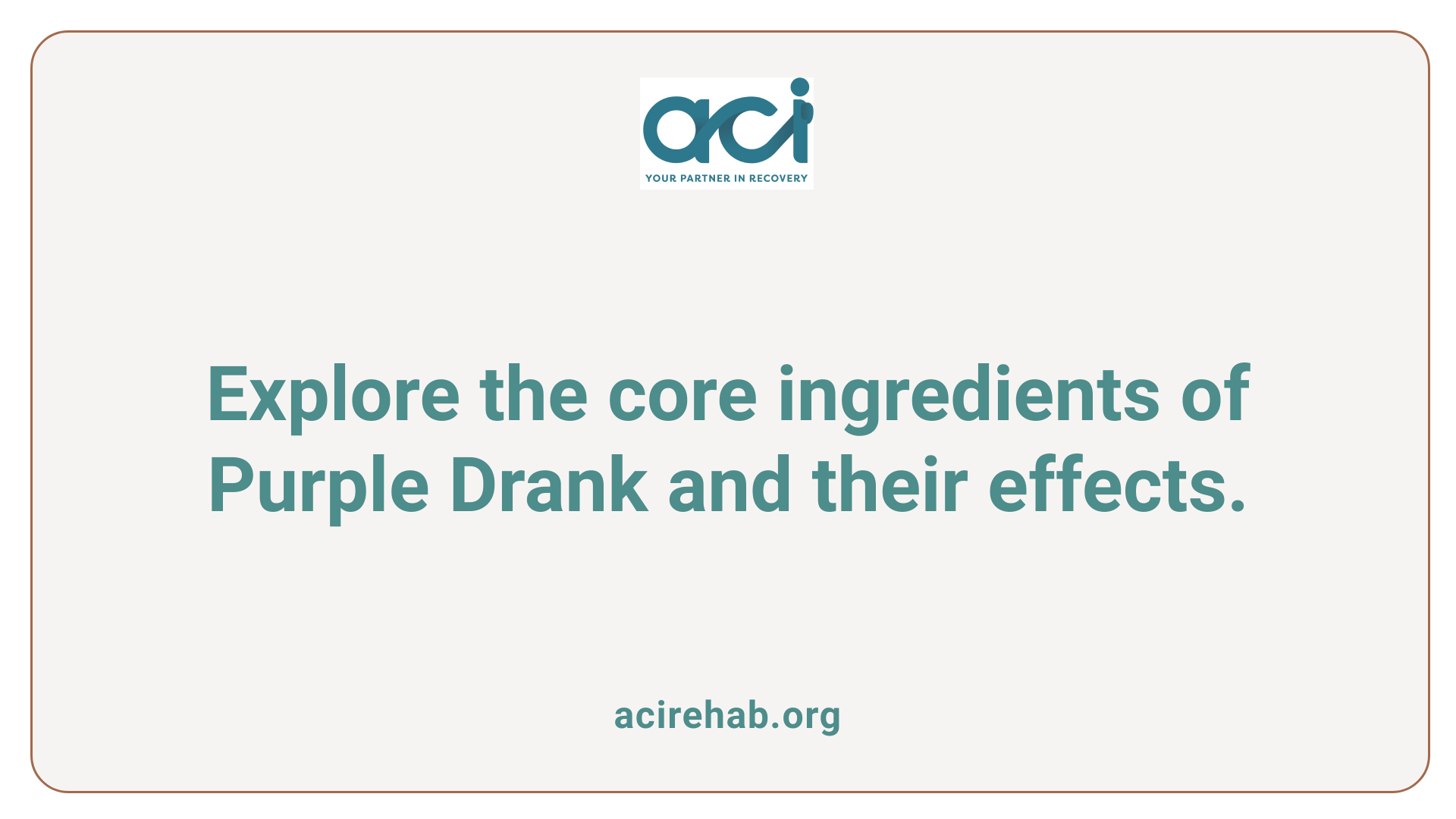
What are the primary ingredients in Purple Drank and their typical effects?
Purple Drank, widely recognized as lean or sizzurp, is a concoction that mainly includes a few core components:
| Ingredient | Type | Effect |
|---|---|---|
| Codeine | Opioid | Induces euphoria, relaxation, and pain relief, but carries a high risk of addiction and respiratory depression. |
| Promethazine | Antihistamine | Enhances sedation and relaxation effects; can slow down the central nervous system. |
| Soda | Mixer | Typically Sprite or Mountain Dew, it provides sweetness and masks the bitter flavor of the cough syrup. |
| Hard Candy | Flavor Enhancer | Commonly Jolly Ranchers, used to improve taste and encourage consumption. |
| Dextromethorphan (DXM) | Over-the-Counter Ingredient | Can produce dissociative effects and may lead to dangerous health risks when misused. |
This combination of ingredients lends itself to a distinct euphoric state, making it particularly appealing to younger audiences. However, the mix of codeine and promethazine is where the significant danger lies, as both can slow brain function and breathing, increasing the risk of overdose—especially when combined with alcohol. Each ingredient contributes to a unique effect, but their interaction can lead to severe and sometimes fatal health consequences.
Health Risks and Dangers of Purple Drank
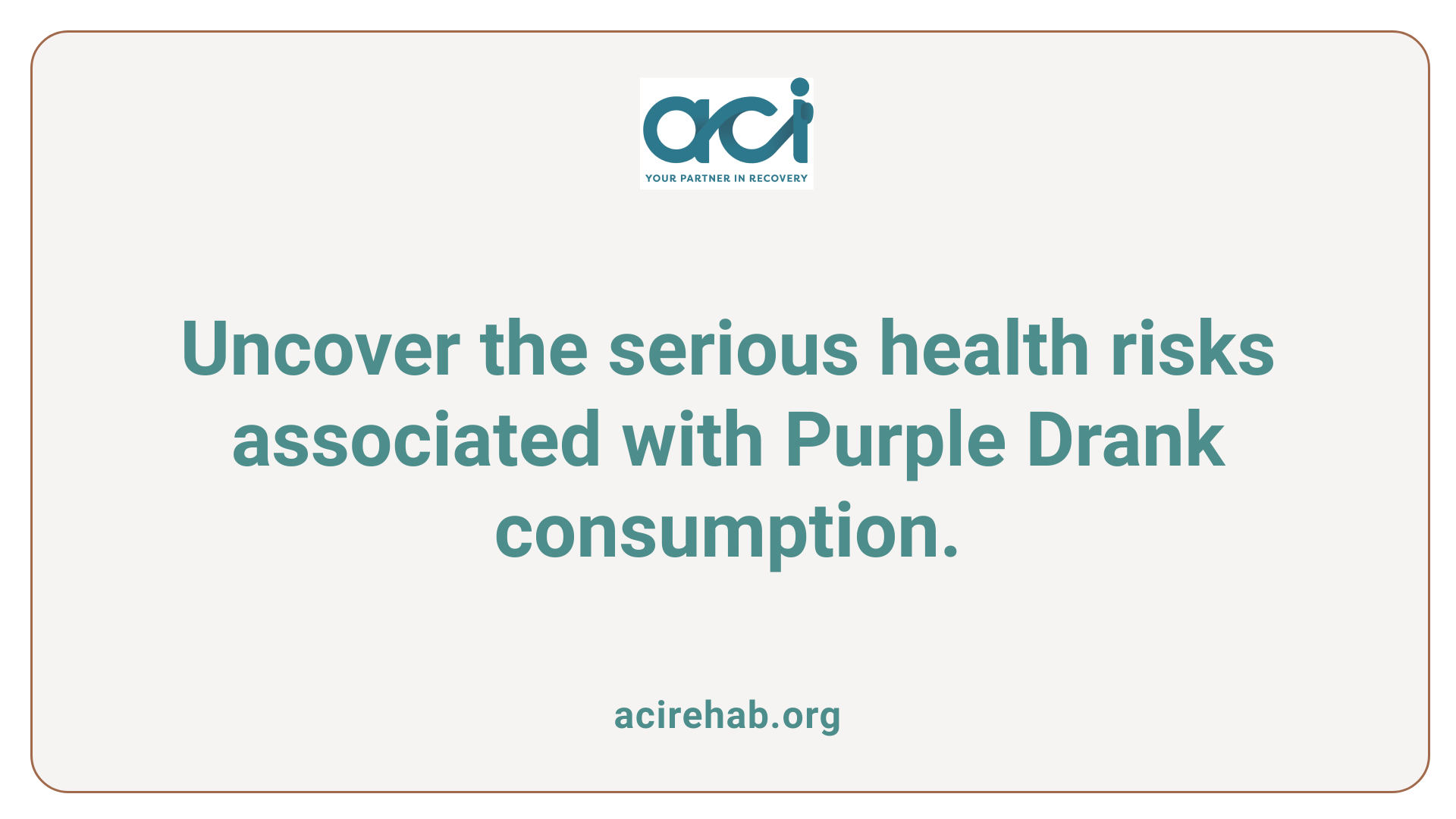
What are the health risks and dangers associated with consuming Purple Drank?
The consumption of Purple Drank, also known as Lean, carries significant health risks. The primary constituents—codeine and promethazine—can lead to severe respiratory depression and overdose. These ingredients depress the central nervous system, potentially impairing motor functions, breathing, and heart rate.
Users face myriad side effects, including dizziness, blurred vision, and potential hallucinations. In many cases, the euphoric high may lead individuals to engage in risky behaviors, increasing the likelihood of accidents or harmful situations. The mixture’s high sugar content, primarily from sodas and candy, also raises dental health concerns, further complicating the overall health picture.
There is a considerable addiction potential linked to Purple Drank. Codeine, being an opioid, can create physical dependence with repeated use. Withdrawal symptoms from this mixture could manifest as gastrointestinal distress, muscle pain, and sleep difficulties, contributing to a compulsive cycle of use. Long-term misuse may also exacerbate mental health conditions, including anxiety and depression, raising further alarm.
The combination of these substances, particularly when mixed with alcohol or other depressants, dramatically heightens the risk of overdose. Fatal outcomes are possible, making it crucial to understand the dangers associated with this recreational concoction. Users must recognize that the allure of Purple Drank belies the serious, often life-threatening consequences that accompany its use.
The Making of Purple Drank
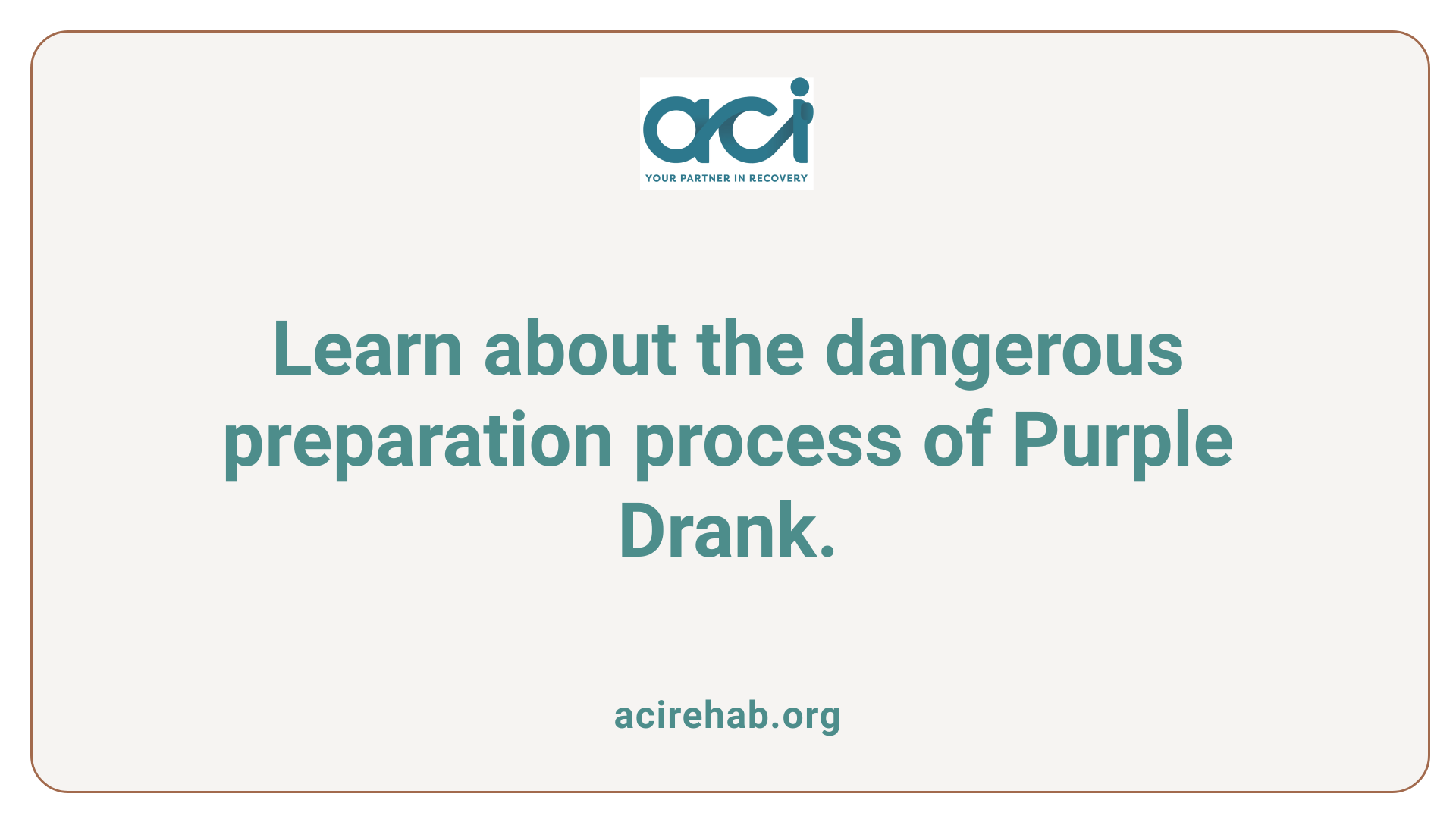
How is Purple Drank typically prepared, and what additional ingredients might be included?
Purple Drank, often referred to as lean or sizzurp, is concocted through a simple yet hazardous preparation process. To make this drink, users mix prescription-grade cough syrup containing codeine and promethazine with a soft drink. The most popular choices include Sprite and Mountain Dew, which contribute sweetness and help to mask the syrup’s bitter flavor.
To enhance the drink’s flavor, many individuals add hard candies, particularly Jolly Ranchers. These candies dissolve in the mixture, contributing to the drink’s signature purple hue and sweeter taste. Beyond these basics, some variations incorporate additional sweet carbonated beverages or even alcohol, heightening its effects and risks.
This drink’s appeal is significantly influenced by its prominence within certain music cultures, especially hip-hop, where it’s often glamorized. However, despite its popularity, the health risks associated with Purple Drank are considerable. They include respiratory depression, addiction, and the potential for overdose, especially when taken in large quantities or mixed with other depressants. Consequently, health professionals strongly advise against its use due to these dangerous side effects.
Cultural and Historical Context
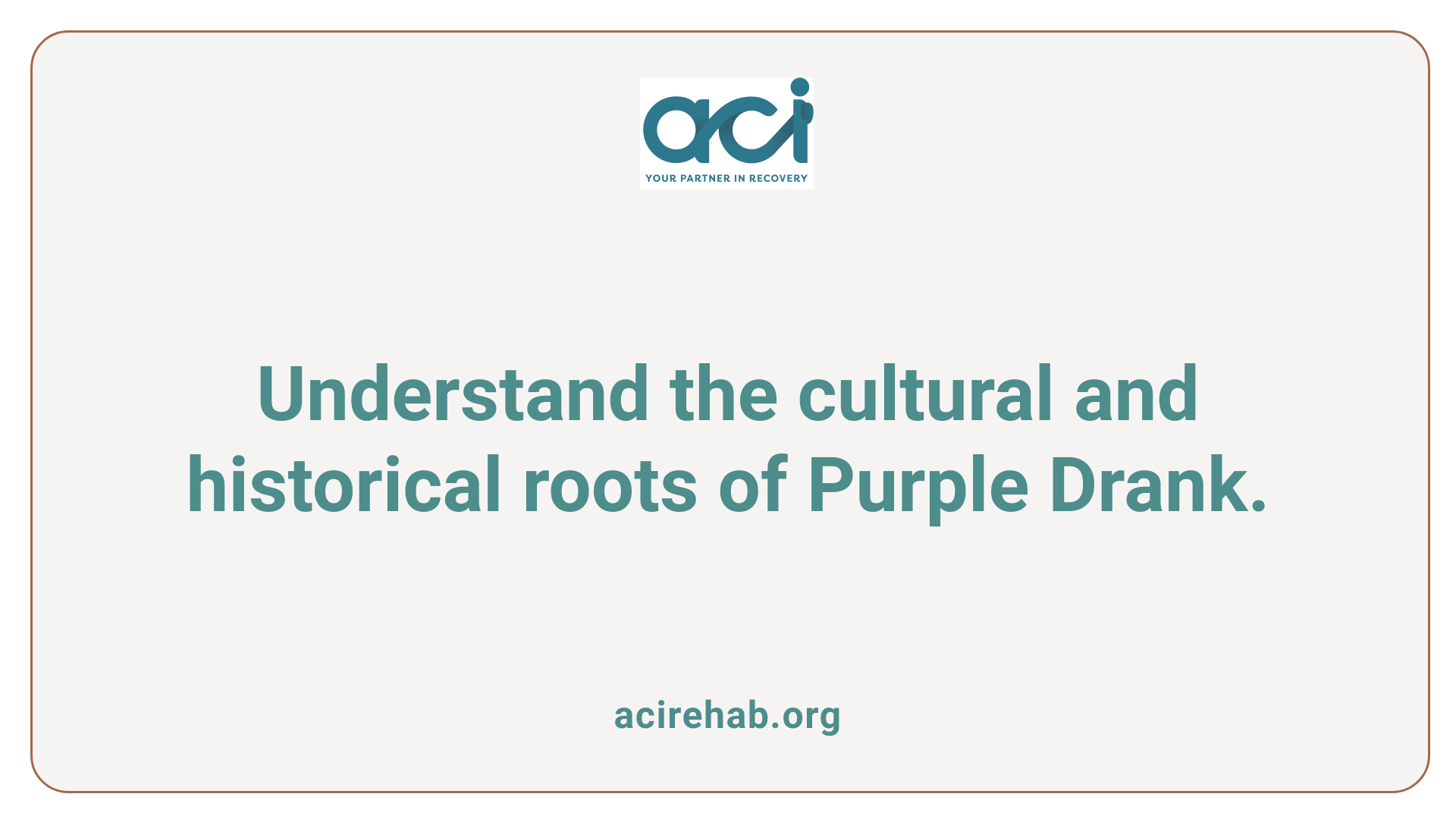
What is the cultural and historical context of Purple Drank use?
Purple drank, often referred to as Lean or Sizzurp, has deep cultural roots that trace back to the southern United States in the 1960s. This concoction, typically a mix of codeine cough syrup, soft drinks like Sprite, and sometimes alcohol, initially emerged as a way to relieve cough symptoms. However, it gained significant notoriety and popularity during the 1990s, particularly within hip-hop culture in Houston, Texas.
The association with music and youth culture has notably contributed to the drink’s appeal among younger audiences, particularly those aged 13 to 21. Artists in the hip-hop community began to glamorize the use of purple drank in their lyrics, which further cemented its status as a trend among teenagers and young adults.
While its origins are deeply tied to African American culture, recent surveys reveal an unsettling trend: the use of purple drank has spread to other ethnic groups, such as Hispanics and Native Americans, and is also present among LGBTQ+ students in urban settings. This diversification highlights a concerning public health issue, as the drink poses severe health risks, including addiction and the potential for overdose.
Moreover, notable incidents, including fatalities among professional athletes, emphasize the dangers associated with purple drank. These aspects of its cultural and historical context reflect broader issues related to music, youth culture, and the urgent public health challenges posed by the recreational use of this substance.
Youth and Recreational Use
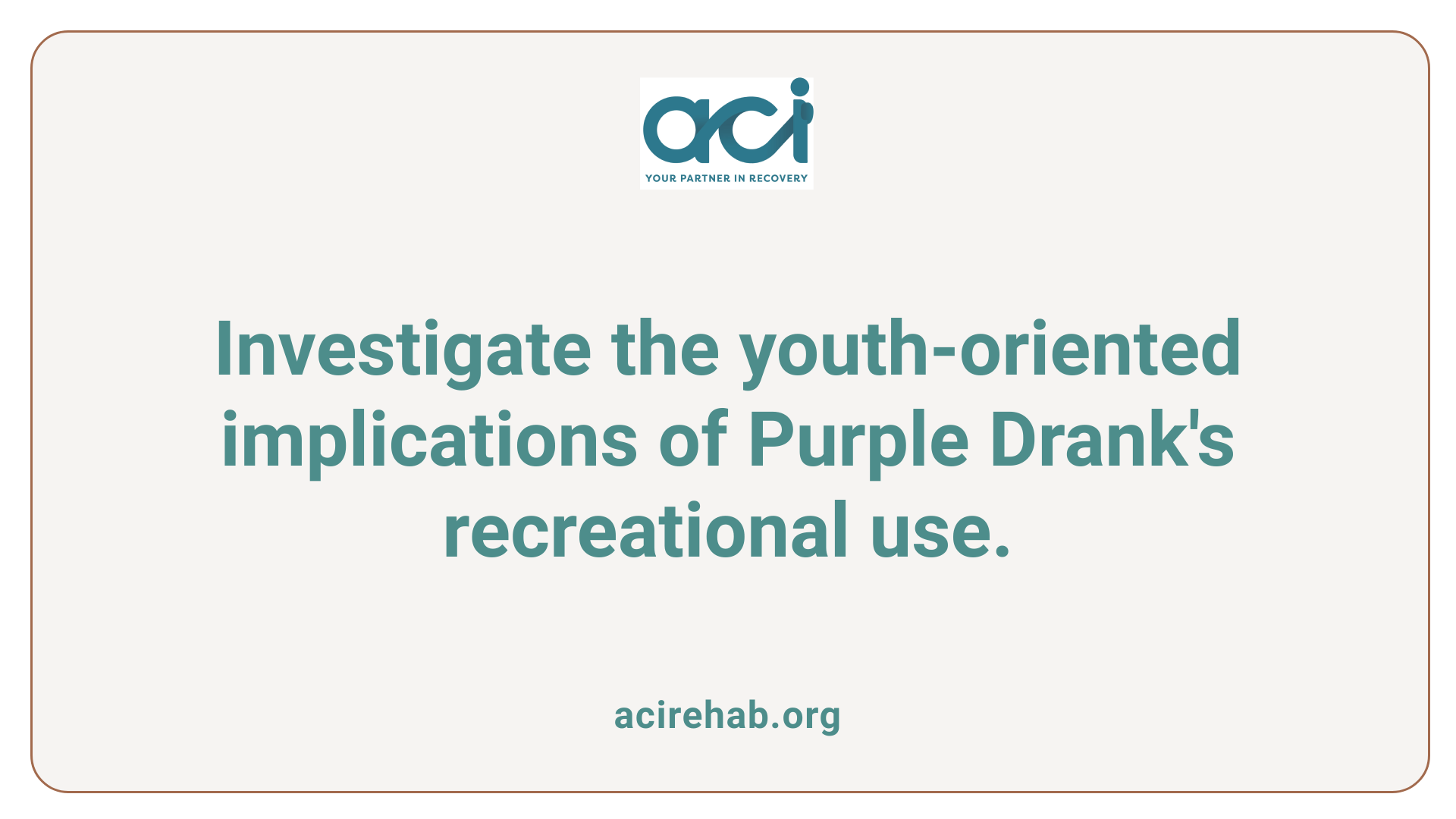
What are the implications of Purple Drank’s recreational use among youth?
The recreational use of Purple Drank, or lean, among youth carries considerable health and social implications. This substance’s sweet flavor, boosted by mixers like Sprite and hard candies, makes it particularly appealing to younger consumers. The glamorization of Purple Drank in pop culture has perpetuated its status as a trendy recreational choice, especially among teenagers and young adults.
Health Risks
The primary ingredient in Purple Drank is codeine, a prescription opioid that brings with it significant addiction risks. Regular use can lead to serious health issues, such as:
- Respiratory depression: This can be dangerous and potentially life-threatening.
- Liver damage: Due to the components of the cough syrup when misused.
- Mental health problems: Including anxiety and depression, which may be exacerbated by substance misuse.
Additionally, the mixture of codeine and promethazine heightens the risk of overdose, making it crucial for educational efforts to target at-risk youth.
Social Considerations
Many adolescents turn to Purple Drank as a coping mechanism for emotional distress, anxiety, or trauma. This trend emphasizes a concerning intersection between mental health issues and substance usage. The prevalence of Purple Drank among various demographic groups, particularly urban youth and certain cultural circles, necessitates targeted prevention and education strategies.
In conclusion, addressing the youth consumption of Purple Drank requires comprehensive approaches that encompass both addiction risks and the broader social implications of its use.
Variations of Purple Drank
Are there any variations of Purple Drank and how do they differ?
Variations of Purple Drank can include formulations that substitute traditional ingredients with alternatives that significantly affect the overall experience and risks involved. Notably, dextromethorphan (DXM)-based concoctions are one such variation. Unlike the classic mix of codeine and promethazine, DXM can lead to unique effects, causing dissociative experiences and hallucinations, which add psychological risks to the physical hazards already present.
Another notable change occurs when alcohol is added to the mix. This incorporation not only enhances the drink’s potency but also raises the likelihood of overdose and severe side effects. The primary ingredients generally include:
| Ingredient | Traditional Formula | DXM Variation |
|---|---|---|
| Type | Codeine + Promethazine | Dextromethorphan (DXM) |
| Effects | Sedative and euphoric | Dissociative and hallucinogenic |
| Risks | Dependence and respiratory issues | Psychological distress and overdose |
These variations in ingredient combinations highlight the diverse effects and potential hazards associated with different Purple Drank preparations.
Social and Legal Implications
What are the legal and social implications of Purple Drank use?
The use of Purple Drank carries serious legal and social ramifications. As it often contains codeine, a controlled substance, users may face legal repercussions depending on local laws regarding prescription drugs. Misuse of prescription cough syrups can lead to criminal charges, fines, or even imprisonment.
Socially, Purple Drank has gained popularity, particularly among youth, due to its association with hip-hop culture and high-profile celebrities. This cultural endorsement may influence young audiences, normalizing its use and potentially leading to greater incidence of addiction and health risks. The resultant trend highlights urgent public health concerns, necessitating education on the dangers of substance misuse and proactive legal strategies to address the rise of such recreational drugs.
Understanding the Impact of Purple Drank
Purple Drank’s combination of alluring cultural motifs and significant risks paints a complex picture. As we’ve explored, its primary ingredients pose real dangers, offering a facade of temporary euphoria that can swiftly lead to addiction and critical health issues. The historical and social dynamics underpinning its use underscore the necessity for informed awareness and preventive measures. Vigilance at individual, community, and policy levels is essential in addressing the challenges presented by this dangerous concoction, ensuring that future generations recognize the implications and prioritize health over fleeting highs.
References
- Lean (Purple Drank) Addiction And Abuse
- Lean/Sizzurp Ingredients, Use, and Coping With Mental Health …
- Lean (drug) – Wikipedia
- Purple drank prevalence and characteristics of misusers of codeine …
- "Purple Drank" (Codeine and Promethazine Cough Syrup) – PubMed
- Codeine & Sprite (Purple Drank or Lean) – The Recovery Village
- What Is Lean? 9 Purple Drank FAQs – Healthline
- What Is Purple Drank? Understanding the Risks and Effects

